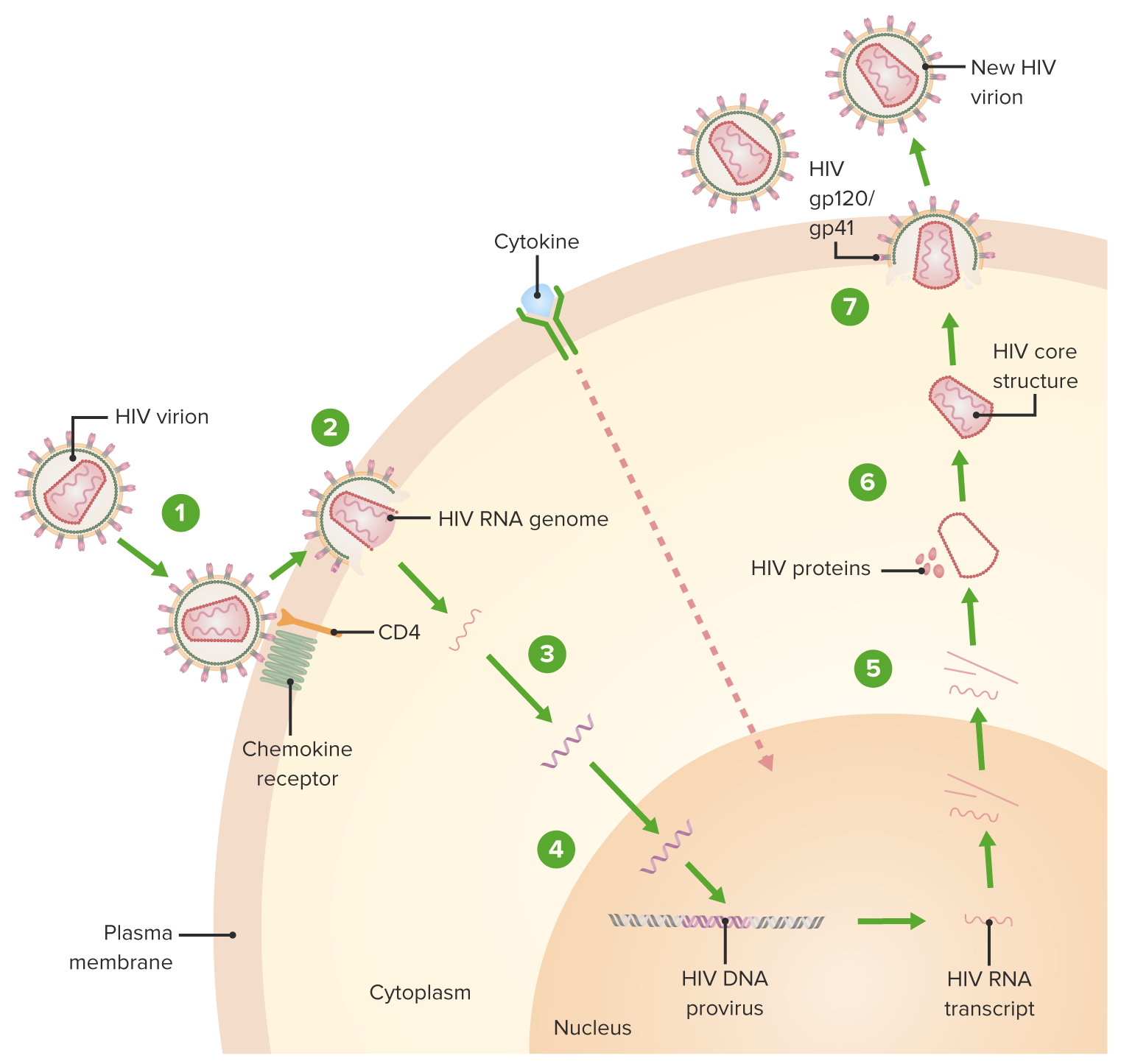Playlist
Show Playlist
Hide Playlist
CCR5 – Antiviral Drugs
-
Slides CCR5 Antiviral Drugs.pdf
-
Reference List Pharmacology.pdf
-
Download Lecture Overview
00:01 I wanna mention one of the viral proteins called CCR5. 00:04 CCR5 is a receptor. It’s an integral membrane protein and if you can imagine this protein in real life, it looks like kinda like a column or tube. 00:18 This is a protein that’s on the surface of T-cells, macrophages, dendritic cells, and some eosinophils. And it provides an entry port for the HIV. 00:29 So CCR5 is going to be a very important structure to talk about. 00:34 Now the Gp120 of the virus binds to either CCR5 or a cousin of CCR5 which is called CXCR4 at the same time that it binds to the CD4 complex. 00:51 So you can see in the first stage there's a CD4 molecule and there's a CCR5 and they're right next to each other, the virus comes along and binds to both. 01:01 The Gp41 subunit spans the membrane then and it combined to either CCR5 or CXCR4, okay? From a practical point of view, CXCR4 and CCR5 are - we're just gonna lump them all into CCR5 just to simplify the lectures a little bit. 01:19 Now, if the Gp120 molecule binds to CD4 without any other protein binding to the CCR5, you won’t get viral binding and you won't be able to initiate that fusion properly and what ends up happening is that the virus is just kinda thrown away and shed off, therefore, that is an entry inhibitor if you can't bind to both - that’s an important thing to remember when we're talking about the drugs. 01:48 So bottom line here is that the CCR5 molecule is essential for the spread of one of the types of HIV.
About the Lecture
The lecture CCR5 – Antiviral Drugs by Pravin Shukle, MD is from the course Antimicrobial Pharmacology.
Included Quiz Questions
Which of the following statements correctly describes the role of CCR5 in HIV infection?
- CCR5 is a receptor found on the surface of certain immune cells and provides an entry port for HIV.
- CCR5 is a type of viral protein that helps HIV replicate inside host cells.
- CCR5 is a component of the HIV envelope that directly binds to the CD4 receptor on T-cells.
- CCR5 is a drug used to treat HIV infection by preventing the virus from entering cells.
- CCR5 is a genetic mutation that increases the risk of HIV infection.5
Customer reviews
5,0 of 5 stars
| 5 Stars |
|
5 |
| 4 Stars |
|
0 |
| 3 Stars |
|
0 |
| 2 Stars |
|
0 |
| 1 Star |
|
0 |





